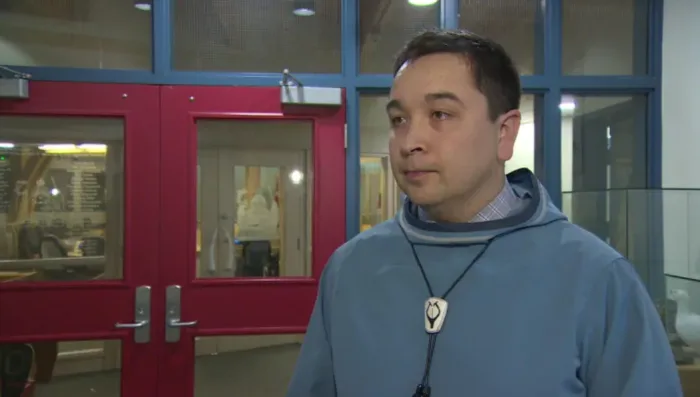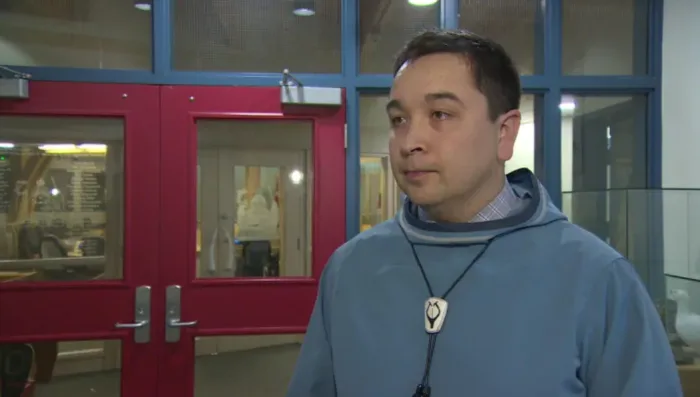
Nunavut education minister urges patience, compassion on first day of lockdown
Nunavut's education minister urged patience and compassion from students and parents on Nov. 18, the first day of the territory's lockdown that saw about 10,000 students stay home from school.
"This is a time of great change, just like in the spring [lockdown]," Minister David Joanasie told media during an online conference call Wednesday.
"We want to ensure everybody is doing well so that's first and foremost," Joanasie said, acknowledging school is a safe space for many students.
"Then we can look at learning and instruction and go from there."
TEACHERS NEED MORE TRAINING, SAYS ASSOCIATION
The Nunavut Teacher's Association agreed on the need for the shutdown, but worried the department was ill-prepared.
John Fanjoy, president of the teacher's association, told CBC News he agreed with Premier Joe Savikataaq that a "circuit breaker lockdown" was needed to address the pandemic's arrival in the territory.
The lockdown is scheduled to last two weeks.
"If this goes beyond the 14 days, which it's almost certain to do in at least three of our communities, we need to see a rush on the technology being provided to our kids, our students, and we need to see better training for our teachers," Fanjoy said during an interview on Nov. 17.
The communities he's referring to are Arviat, Rankin Inlet and Sanikiluaq, all of which had confirmed cases of COVID-19 on that day.
Joanasie said teachers were prepared for a lockdown, which went into effect Nov. 18, and had prepared take-home learning packages for students.
And the department has been preparing an online learning platform, called EDSBY, for rollout as well, Joanasie said.
But Fanjoy said the department has been preparing for that rollout since the spring lockdown and is surprised it hasn't already happened.
"The government had the opportunity to do more substantive training for teachers [on EDSBY] and to develop and implement an online learning platform sooner, and they did not," Fanjoy said.
Some teachers received only a half day of training while others received a full day on the EDSBY platform, but many teachers say it's not enough, said Fanjoy.
Joanasie said more training for teachers could be available if necessary.

Education Minister David Joanasie said his first priority is that everybody is doing well during the lockdown, acknowledging school is a safe space for many students. 'Then we can look at learning and instruction and go from there.' (David Gunn/CBC)
ENOUGH DEVICES FOR ABOUT ONE-THIRD OF STUDENTS
Fanjoy said there are two other major concerns with the remote learning system: technology and equality.
To access EDSBY, students need a personal electronic device such as a tablet or laptop and internet access.
Joanasie said the department has procured about 3,000 personal devices but only about 800 of those are currently in the territory undergoing testing. The government has also procured about 3,000 data sticks.
The remainder are expected to arrive in the next month or two, Joanasie said.
"They've only procured enough to supply, on a good day, a third of the student population of Nunavut," Fanjoy said.
If it comes to a prolonged lockdown, Fanjoy said he worries about equal opportunity for education. He said those in decentralized communities and with access to electronics and internet will be advantaged.
"If we want learning to be equitable across the board for all of our students, so the education gap doesn't increase, we have to be able to provide that technology to all of our students, and the government isn't there by a long shot," he said.
Kids in the younger grades are at greatest risk of being left behind on this front, Fanjoy said.
And Joanasie appeared to agree. The minister said that priority might have to be given to older students if there are too few electronic devices to go around.
"We do ask that people who do have devices at home, if they don't need a school-supported device, we ask that you specify [that] to the school ... so that these go to those who need them most," Joanasie said.
This article was written for the CBC by Thomas Rohner.





